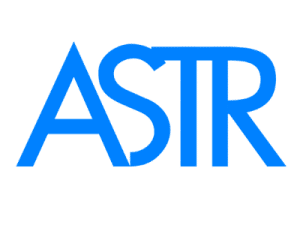How Scar Tissue Affects Fascia—and How to Break It Down Safely
How Scar Tissue Affects Fascia—and How to Break It Down Safely
Search terms: scar tissue and fascia, myofascial scar release, post-surgery scar pain
Whether from surgery, injury, or repetitive strain, scar tissue forms as your body’s natural attempt to heal. But when this tissue becomes excessive or disorganized, it can disrupt fascia—the connective tissue that surrounds muscles, nerves, and organs. Over time, this leads to pain, stiffness, nerve irritation, and limited mobility.
If you’ve been struggling with lingering pain long after healing from a surgery or injury, fascial adhesions and scar tissue may be the root cause.
🧬 What Is Scar Tissue—and How Is It Different from Fascia?
-
Fascia is a soft, flexible network that supports and connects every structure in your body. It’s meant to glide smoothly as you move.
-
Scar tissue is dense, fibrotic tissue that forms after trauma to repair damage. Unlike fascia, it lacks elasticity and can stick to surrounding structures.
When scar tissue forms within or near fascia, it causes fascial adhesions—disrupting normal muscle function, circulation, and nerve signaling.
❗ Common Problems Caused by Scar Tissue in Fascia
-
Chronic pain and tightness that doesn’t respond to stretching
-
Reduced range of motion in nearby joints
-
Domningar eller stickningar due to nerve entrapment
-
Recurrent muscle strain or joint misalignment
-
Post-surgical discomfort months or years after healing
Scar tissue can affect:
-
Post-surgical sites (C-section, orthopedic surgery, abdominal surgery)
-
Muscles or tendons after injury
-
Areas of repetitive strain or microtrauma
Even small scars can affect fascia through chains of tension—pulling on distant areas and creating full-body dysfunction.
🧪 Why Scar Tissue Can Cause Long-Term Pain
Unlike healthy fascia, scar tissue is:
-
Thicker and more rigid
-
Disorganized in fiber alignment
-
Less vascular, leading to poor oxygenation
-
Sticky, causing surrounding tissues to adhere and lose mobility
Scar tissue may compress blood vessels or nerves, leading to pain that persists even when imaging shows no structural damage (Stecco et al., 2014).
🔧 How to Break Down Scar Tissue in Fascia—Safely and Naturally
1. Instrument-Assisted Myofascial Release (IASTM)
One of the most effective ways to break up fascial adhesions is through gentle, targeted pressure using specialized tools.
Recommended Tool:
✅ ASTR® Scar & Myofascial Release Tools
These patented instruments are:
-
Designed by a Doctor of Physical Therapy
-
Clinically tested for post-surgical and trauma-related scar pain
-
Engineered to break down adhesions safely without damaging tissue
2. Manual Scar Tissue Massage
Trained professionals can apply gentle cross-friction massage to encourage realignment of collagen fibers and restore fascial glide.
3. Stretching + Movement Re-education
As the scar softens, movement retraining is essential to prevent re-adhesion and restore full function. Focus on:
-
Pain-free mobility
-
Diaphragmatic breathing
-
Rebalancing the surrounding muscles
4. Anti-Inflammatory Nutrition
Inflammation promotes excessive scar formation. The ASTR Diet helps reduce systemic inflammation, support tissue repair, and prevent fibrotic buildup.
5. Hydration and Tissue Support
Fascia and scar tissue respond best when tissues are hydrated and nourished. Adequate intake of collagen-building nutrients like vitamin C, magnesium, and protein is key.
⚠️ What Not to Do
-
Avoid aggressive scraping or deep pressure—this can cause bruising or worsen inflammation.
-
Don’t stretch scar tissue too soon after surgery or injury—wait for full medical clearance.
-
Avoid applying pressure to actively inflamed or infected areas.
🧭 When Should You Treat Scar Tissue?
Consider scar release therapy if you experience:
-
Pain that started after a surgery or injury
-
Numbness or tingling near a scar
-
Tightness or pulling sensations during movement
-
Visible puckering or thickening of the skin
-
Joint restrictions that don’t respond to normal therapy
Final Thoughts
Scar tissue may be your body’s way of healing—but if it binds into the fascia, it can become a silent source of pain and dysfunction. The key to recovery is gentle, science-backed therapy that restores fascia mobility and breaks the pain cycle.
Whether you’re healing from surgery or struggling with old scar-related tension, myofascial scar release is both safe and effective—especially when done with the right tools and support.
Referenser
-
Stecco, C., Macchi, V., Porzionato, A., Duparc, F., & De Caro, R. (2014). The fascia: The forgotten structure. Italian Journal of Anatomy and Embryology, 119(3), 127–138.
-
Dommerholt, J., Bron, C., & Gerwin, R. D. (2006). Myofascial Trigger Points: Pathophysiology and Evidence-Informed Diagnosis and Management.
-
Wong, C. K. (2013). Interrater reliability of soft tissue mobility assessment using instrument-assisted soft tissue mobilization. International Journal of Sports Physical Therapy, 8(6), 747–755.

